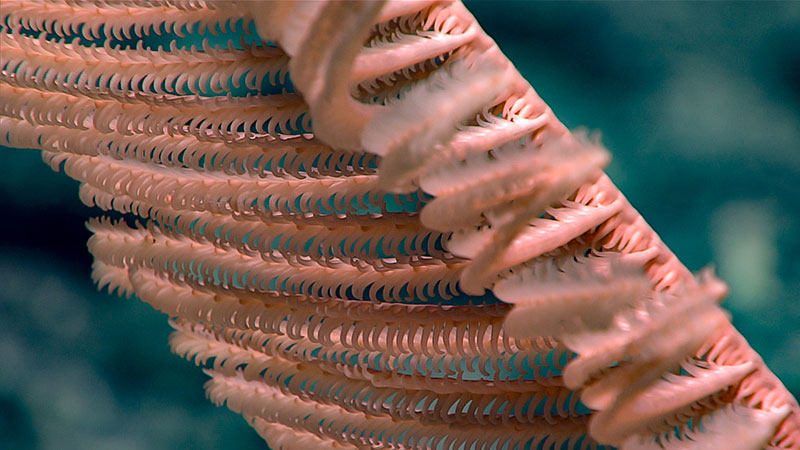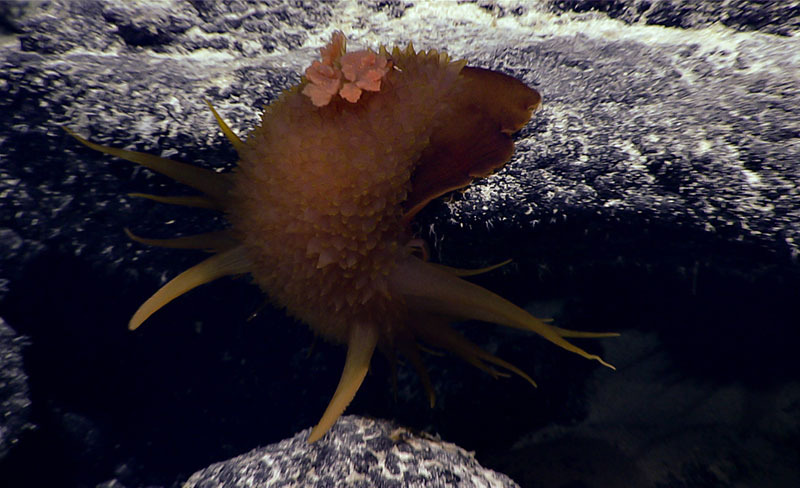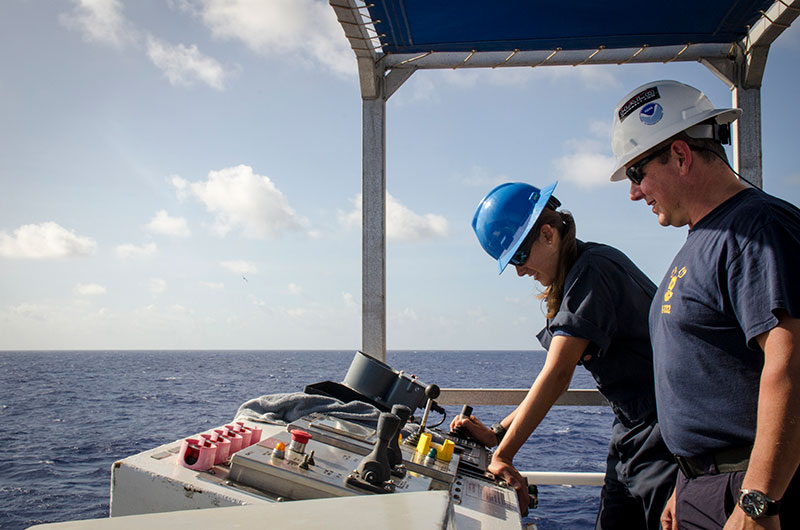-

Black corals, like this Bathypathes, were not seen in the sedimented area where the dive began, but became more common as Deep Discoverer explored the more rocky ridge and crest. Image courtesy of the NOAA Office of Ocean Exploration and Research, 2017 Laulima O Ka Moana. Download larger version (jpg, 1.4 MB).
-

Probably the most unusual animal on today’s dive was a large (10.0 centimeters in length) brown nudibranch in the genus Bathydoris. Opisthobranchs are seldom observed from abyssal depth, making this a very unusual occurrence. Image courtesy of the NOAA Office of Ocean Exploration and Research, 2017 Laulima O Ka Moana. Download larger version (jpg, 1.2 MB).
-

Commanding Officer, CDR Eric Johnson, oversees ENS Brianna Pacheco as she navigates the ship from the aft conning station. ENS Pacheco demonstrated her navigation skills to bring a buoy thrown off the the ship around to the starboard side for retrieval. An official letter was attached to the buoy – designating her as a qualified Officer of the Deck (OOD) underway on NOAA Ship Okeanos Explorer! This means she possesses all the skills required to maintain a competent navigation watch, and she is thoroughly familiar with the ship, its operating and safety systems, and can effectively take care of her own safety as well as that of the ship. Image courtesy of the NOAA Office of Ocean Exploration and Research, 2017 Laulima O Ka Moana. Download larger version (jpg, 7.6 MB).